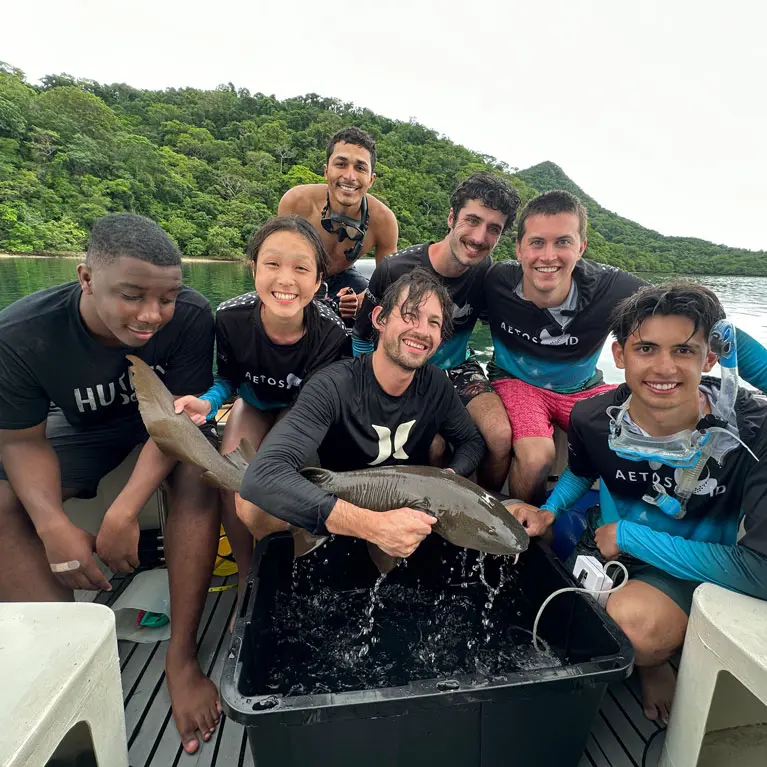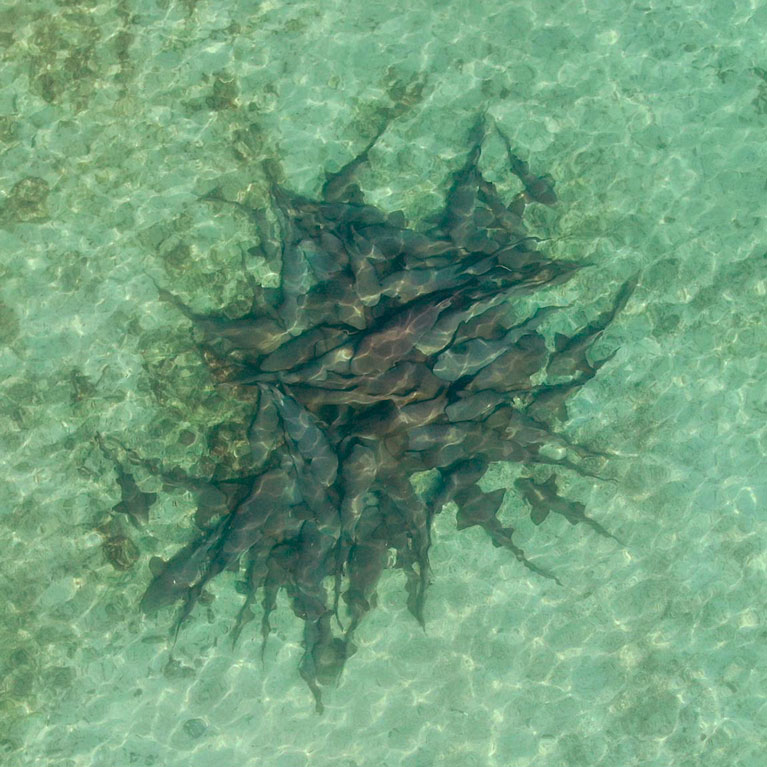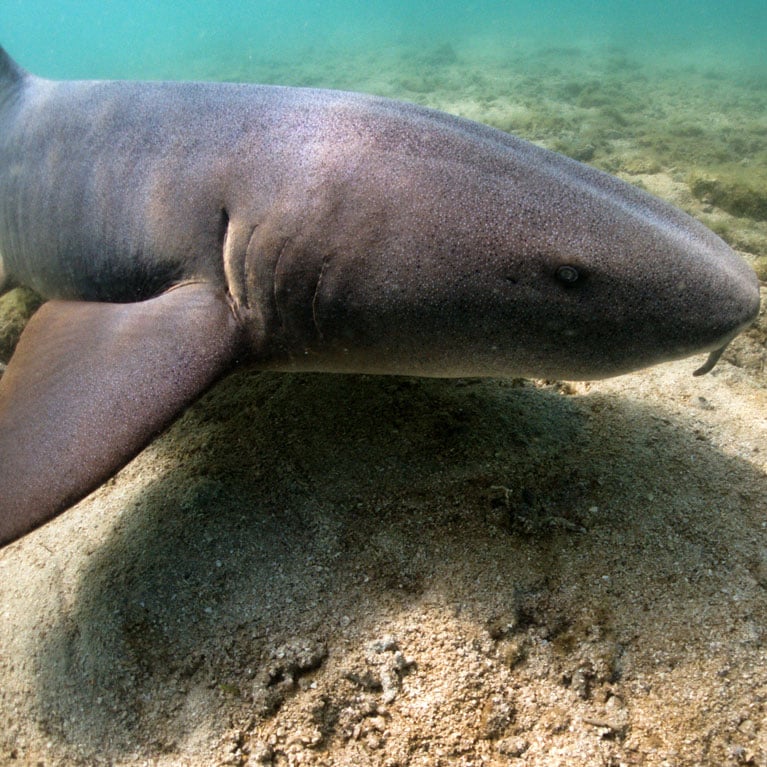Taking the temperature on nurse shark movement patterns
In the protected waters of the St Elena Bay Marine Management Area on the north Pacific coast of Costa Rica, Pacific nurse sharks move in an ocean that is changing temperature. In this region of strong seasonal upwelling, cooler waters are pushed from the depths between December and April. Sergio believes the colder temperatures must influence where these sharks are moving and aggregating. In a world where ocean temperatures are changing with the climate, and in a region where the El Niño and La Niña oceanographic events are keenly experienced, Sergio wants to understand whether nurse sharks are changing which habitats they use based on the presence of warmer waters.
Although I was born in a city and have lived there most of my life, I am lucky it happened to be San José, Costa Rica. The great thing about this city is that it takes only a short drive up the mountains to be surrounded by lush tropical forest, or a couple hours down the coast to reach beautiful beaches. When I was a child my family took me to all these places, so from very early on I knew I wanted to be a biologist. As soon as I was done with high school, I did...



Aggregation dynamics of endangered Pacific nurse sharks (Ginglymostoma unami), in the Costa Rican north Pacific
We aim to describe the spatio-temporal dynamics of aggregations and movements of Pacific nurse sharks in the Santa Elena Bay Marine Management Area and adjacent waters, and determine how these are influenced by changing environmental conditions such as water temperature.
Better understanding of the Pacific nurse shark is urgent since this species is listed as Endangered by the IUCN Red List due to suspected population declines resulting from fishing pressure and the degradation of mangrove habitats. Studying the residency, movements and habitat connectivity of Pacific nurse sharks is essential to inform future management and conservation initiatives for the species throughout its distribution.
The Pacific nurse shark Ginglymostoma unami inhabits the Pacific coast of Latin America, ranging from Mexico to Peru. We have observed these sharks forming aggregations in the shallow waters of Santa Elena Bay on the Pacific coast of northern Costa Rica. This is an ideal site to study aggregations, since in 2018 Santa Elena Bay was declared a marine management area, where fishing within the bay is restricted to low-impact methods (handline, spear fishing, sport fishing). Santa Elena and its nearby waters are also special in their oceanography, as this region is influenced by a strong seasonal upwelling, a phenomenon where the stronger winds occurring from late December to early April cause water temperatures to decrease as much as 10 °C. Such temperature changes during this season must affect the physiology of Pacific nurse sharks, since they obtain their bodily heat from the surrounding environment. Exposure to colder waters may cause these sharks to change their movement and aggregation patterns to find refuge in areas where the waters are warmer. When aggregating, sharks may either seek warmer waters to accelerate digestion or gestation; or seek colder waters to rest in before moving to hunt in warmer waters. If upwelling patterns are altered because of climate change, sharks could alter their behaviour to move to unprotected areas exposed to fishing, making this research essential for their future management and conservation.
- To determine whether Pacific nurse shark aggregations will form when water temperature in aggregation sites is significantly warmer than in other parts of Santa Elena Bay.
- To determine if Pacific nurse sharks of different sexes and sizes will use the aggregation sites with varying frequency.
- To determine whether the presence of Pacific nurse sharks in the aggregation sites will vary throughout the year and between years in response to water temperature changes associated with upwelling events and oceanographic phenomena such as El Niño or La Niña.
Summary of main research results/outcomes
Drone surveys repeatedly detected Pacific nurse sharks (Ginglymostoma unami) forming large, tight aggregations in the shallow waters of Santa Elena Bay. These aggregations were more frequent during the colder upwelling season and were most often observed in warmer areas compared to surrounding sites, suggesting the sharks use these spots as thermal refuges. Interestingly, while temperature explained where aggregations formed at a broad scale, it didn’t fully account for their precise locations within the site, indicating that other factors such as huddling and conspecific attraction may also play a role. These findings coincide with insights from telemetry data, which showed sharks increase their presence in the Bay during upwelling. Our work highlights the influence of environmental and social factors on aggregation behavior in a tropical shark, with key conservation implications for dynamic coastal habitats under climate change.
Published papers
Madrigal-Mora, S., Lowe, C. G., Clark, C., & Espinoza, M. (in review). The Aggregation Behavior of Pacific Nurse Sharks (Ginglymostoma unami) is Associated with Seasonal Water Temperature Changes in a Tropical Upwelling Bay. Preprint available at SSRN 4956621: https://papers.ssrn.com/sol3/papers.cfm?abstract_id=4956621
Madrigal-Mora, S., Lowe, C.G., Clark, C., & Espinoza, M. (2024). Pacific nurse sharks Ginglymostoma unami exhibit yearly patterns of site fidelity to a tropical embayment subjected to seasonal upwelling. Marine Ecology Progress Series. https://doi.org/10.3354/meps14733
Lalgudi, C. K., Leone, M. E., Clark, J. V., Madrigal-Mora, S., & Espinoza, M. (in review). Zero-shot Shark Tracking and Biometrics from Aerial Imagery. Preprint available at arXiv:2501.05717.
Bettoni-Rodríguez, G., Barquero-Calvo, E., Fallas-Madrigal, D., Chavarría Quiros, P., Madrigal Mora, S., & Espinoza, M. (in review). Absence of anthropogenic related antimicrobial resistance in elasmobranchs (Elasmobranchii) in a marine management area.

